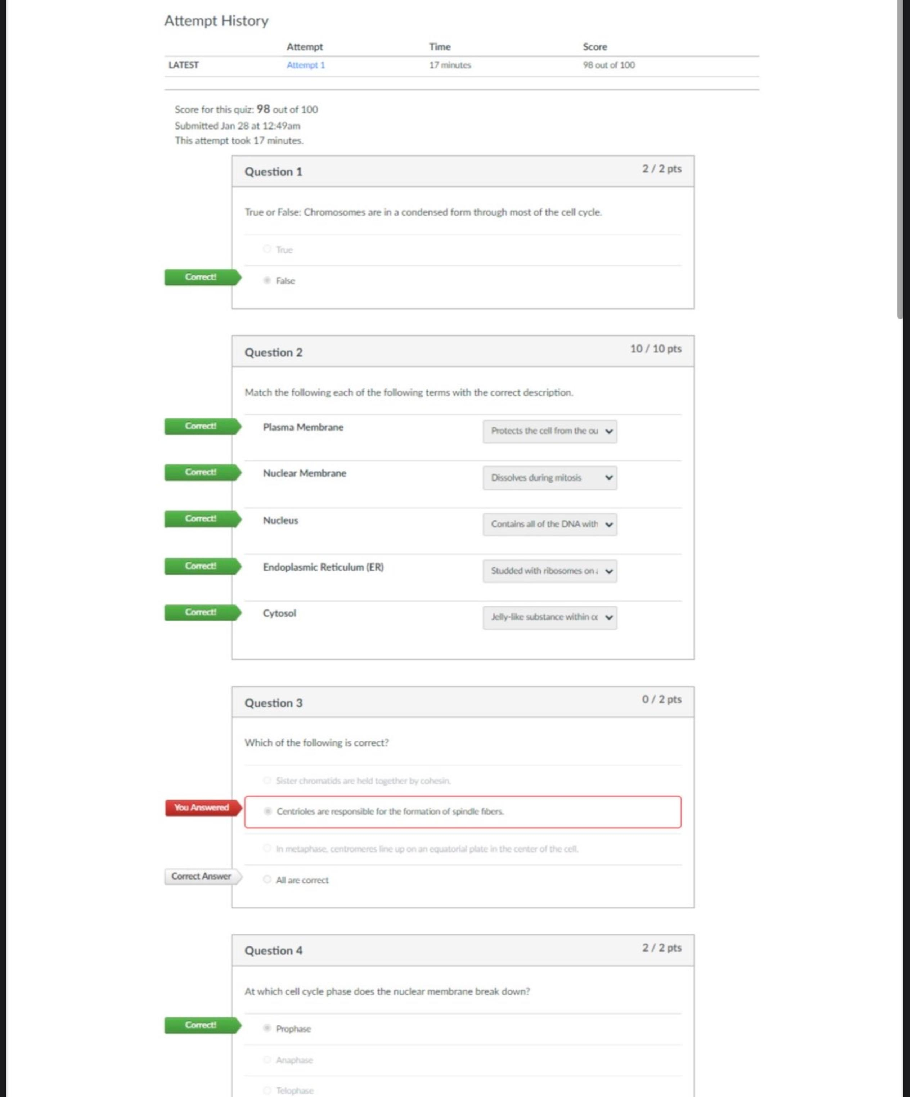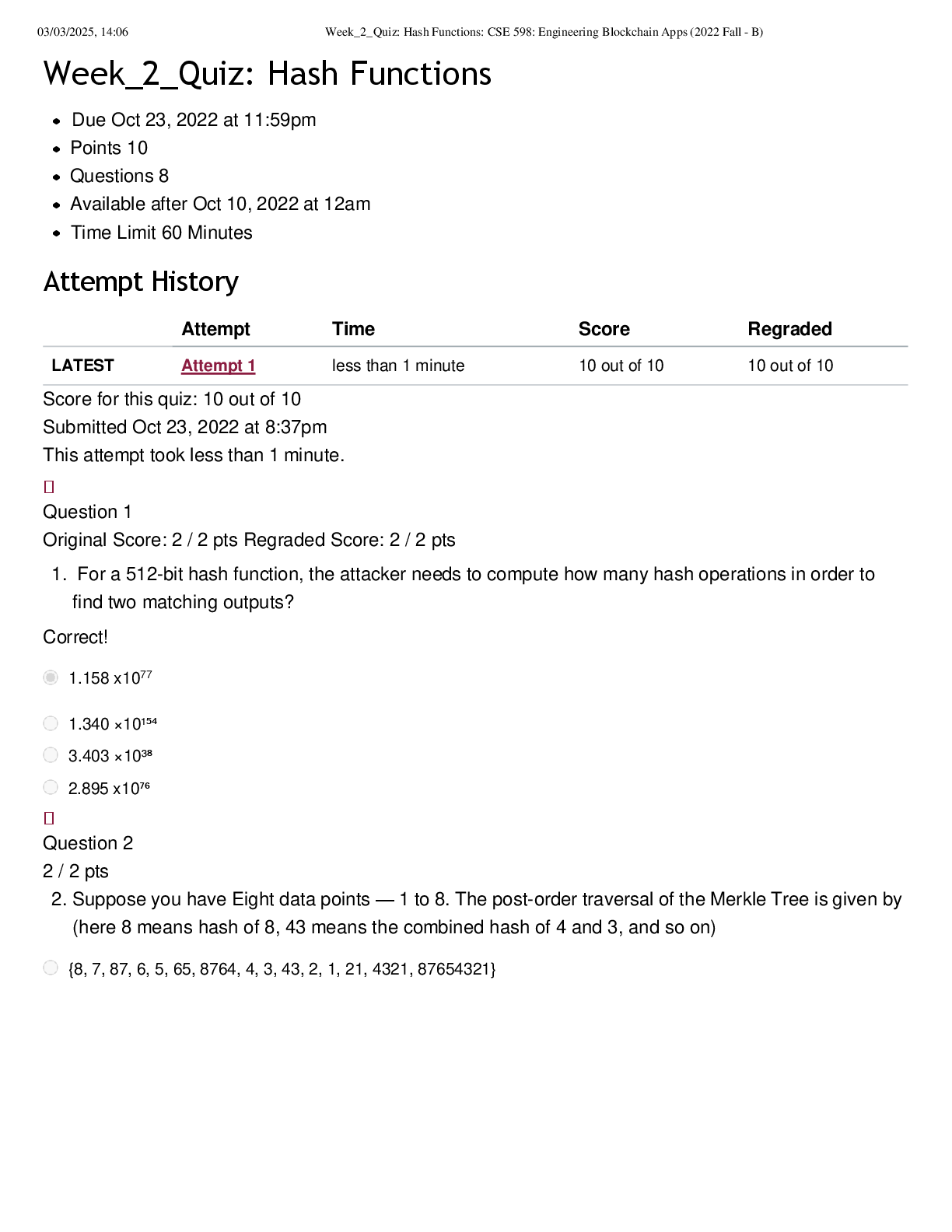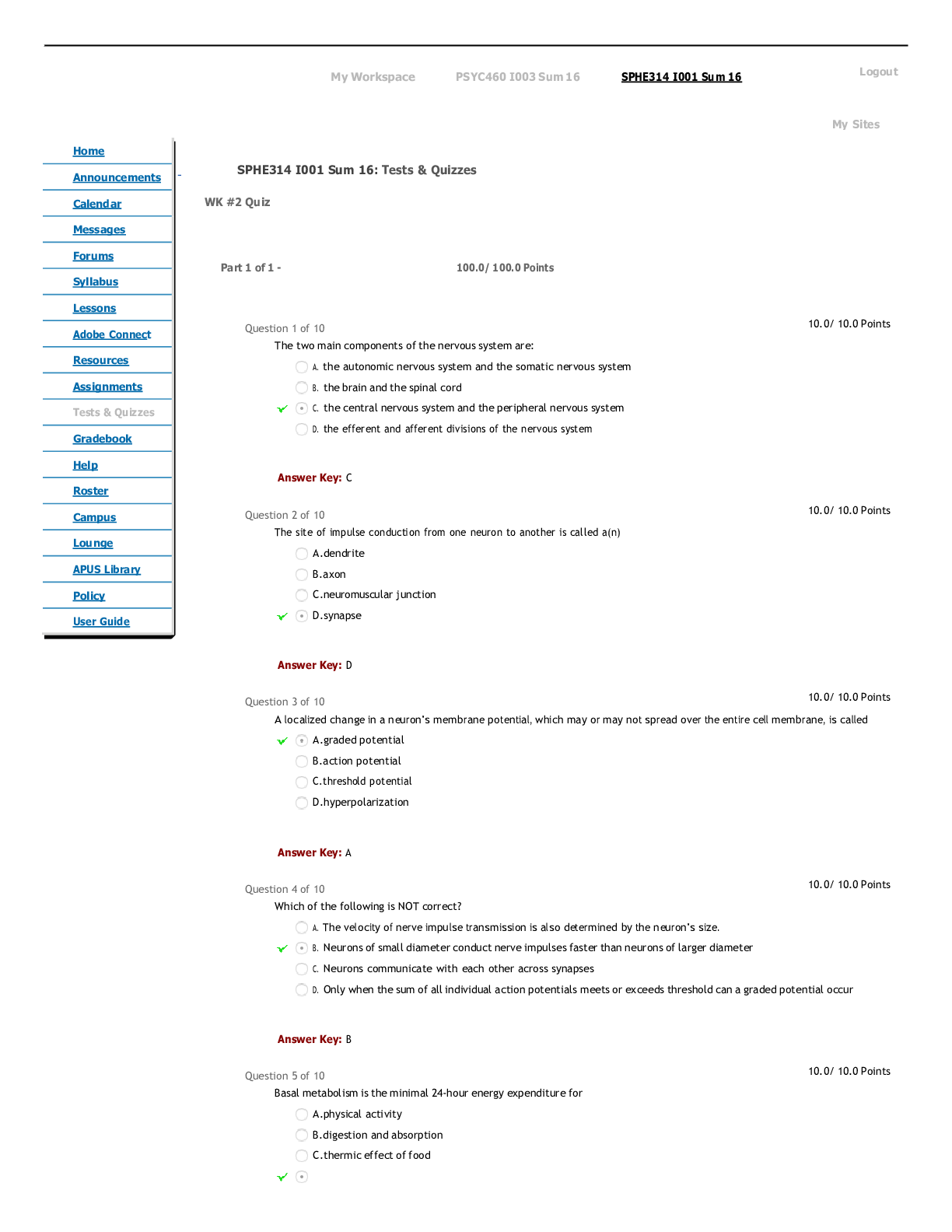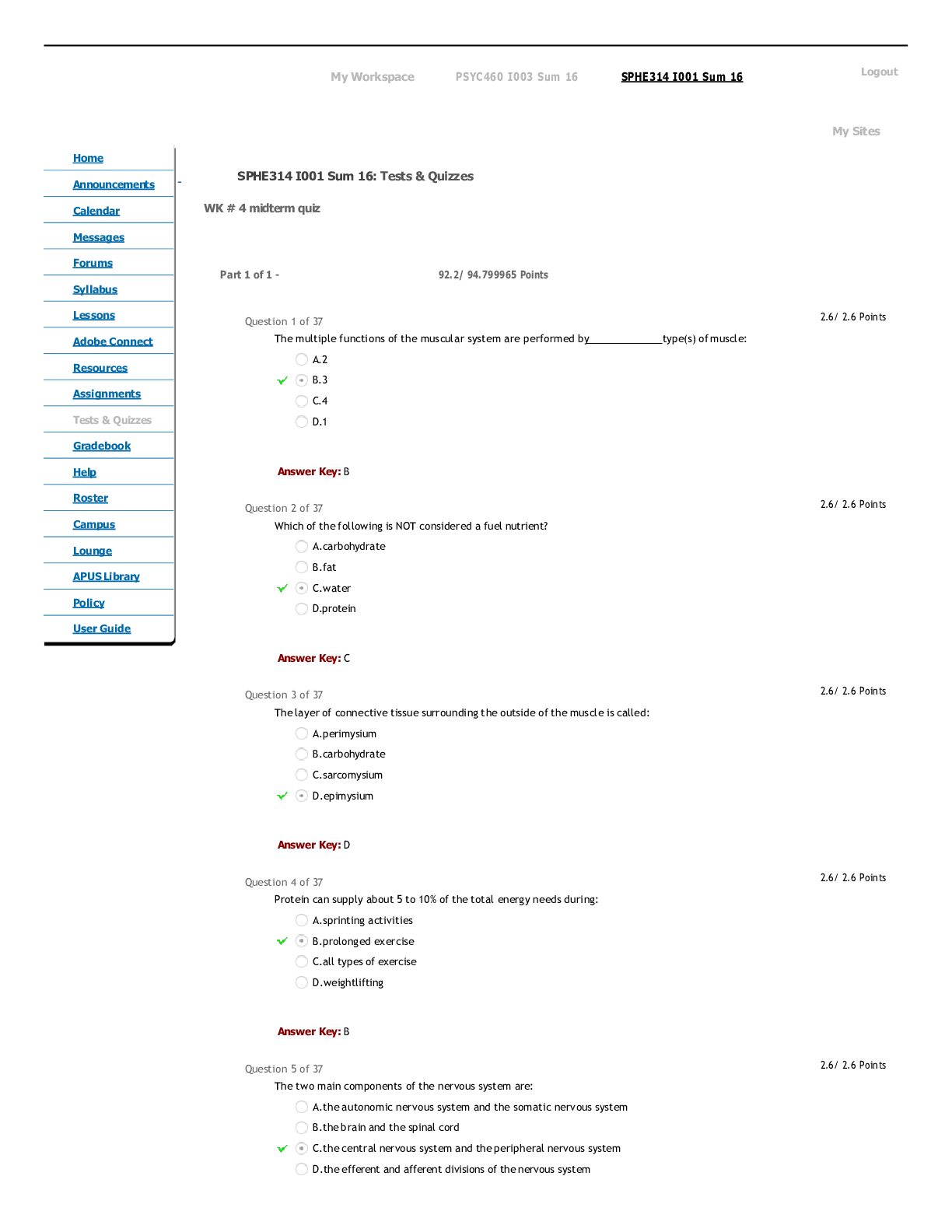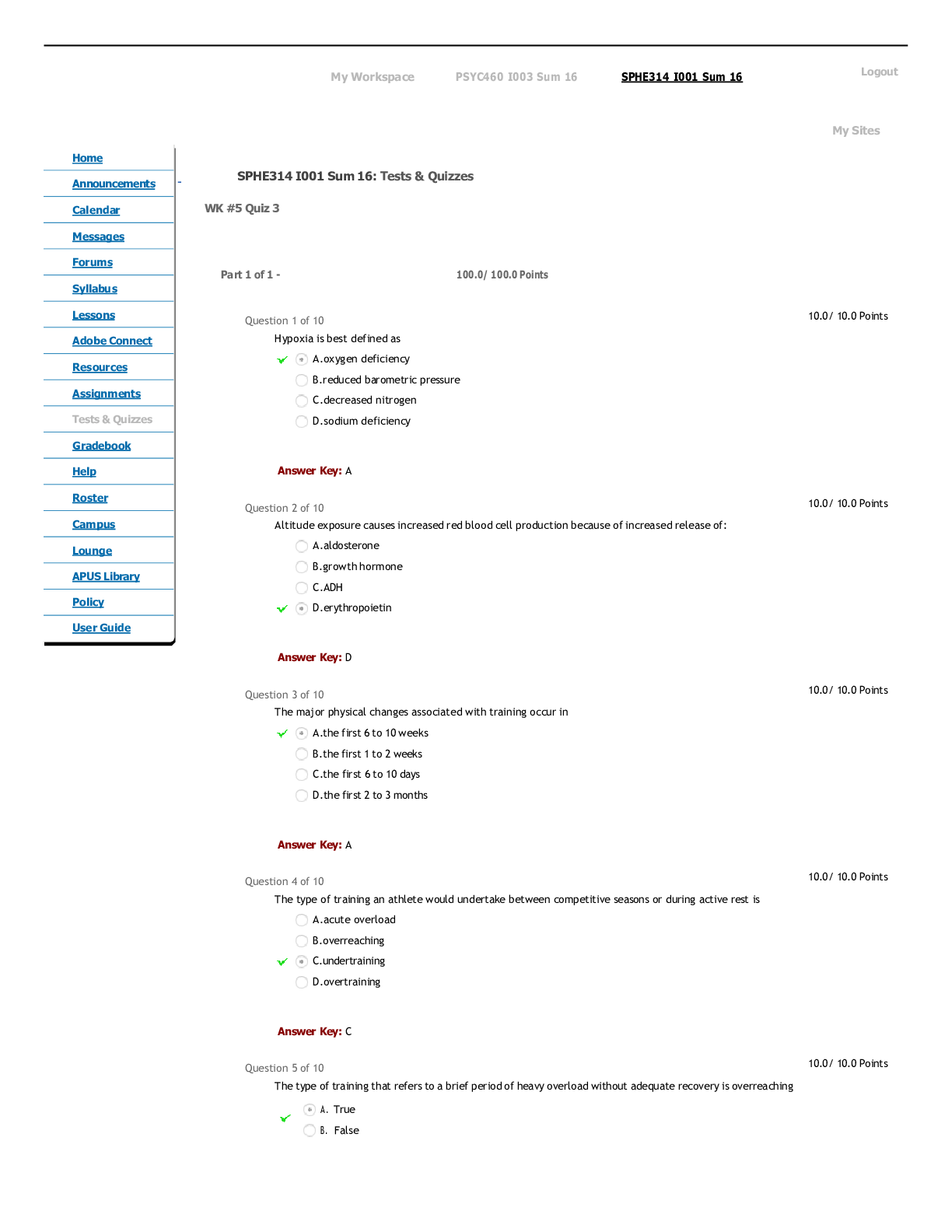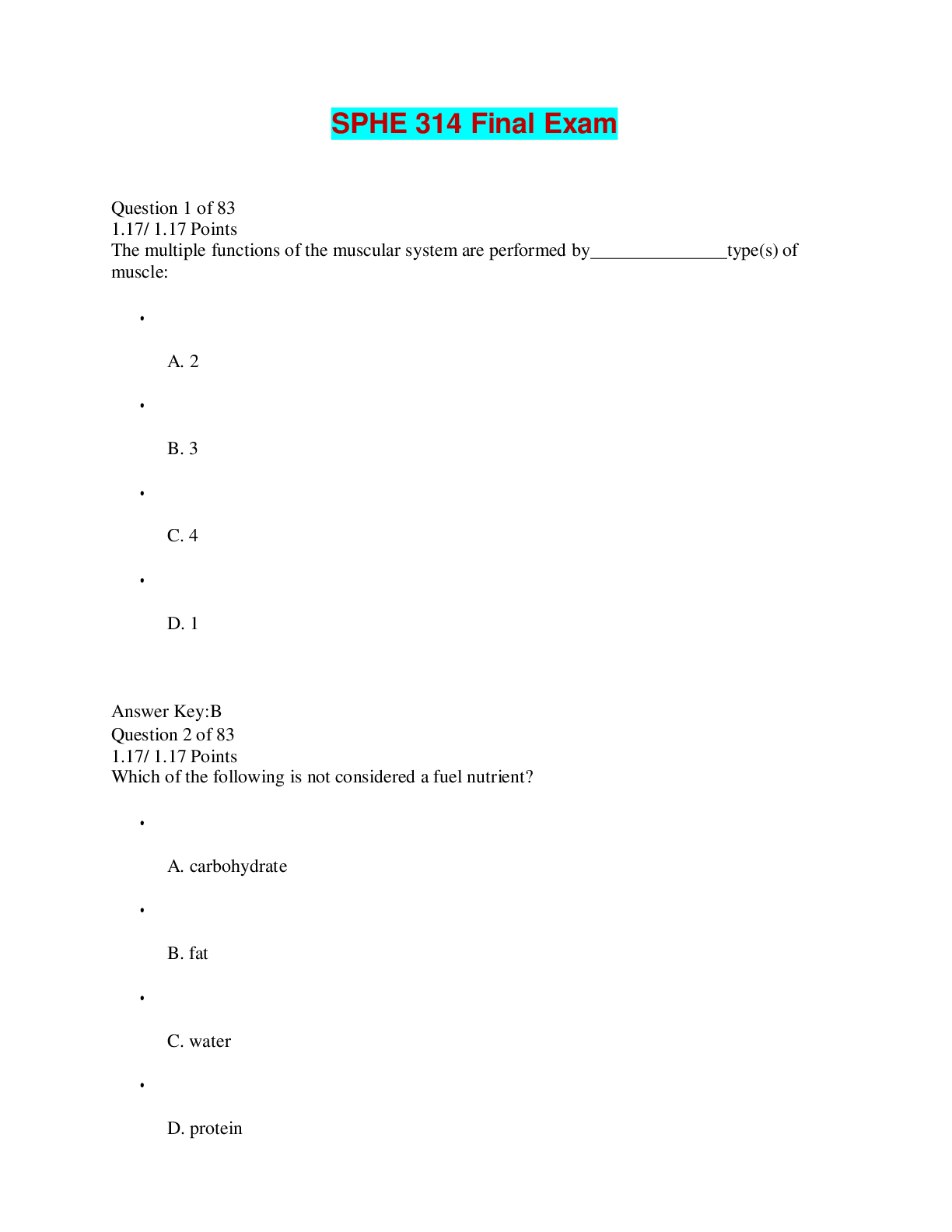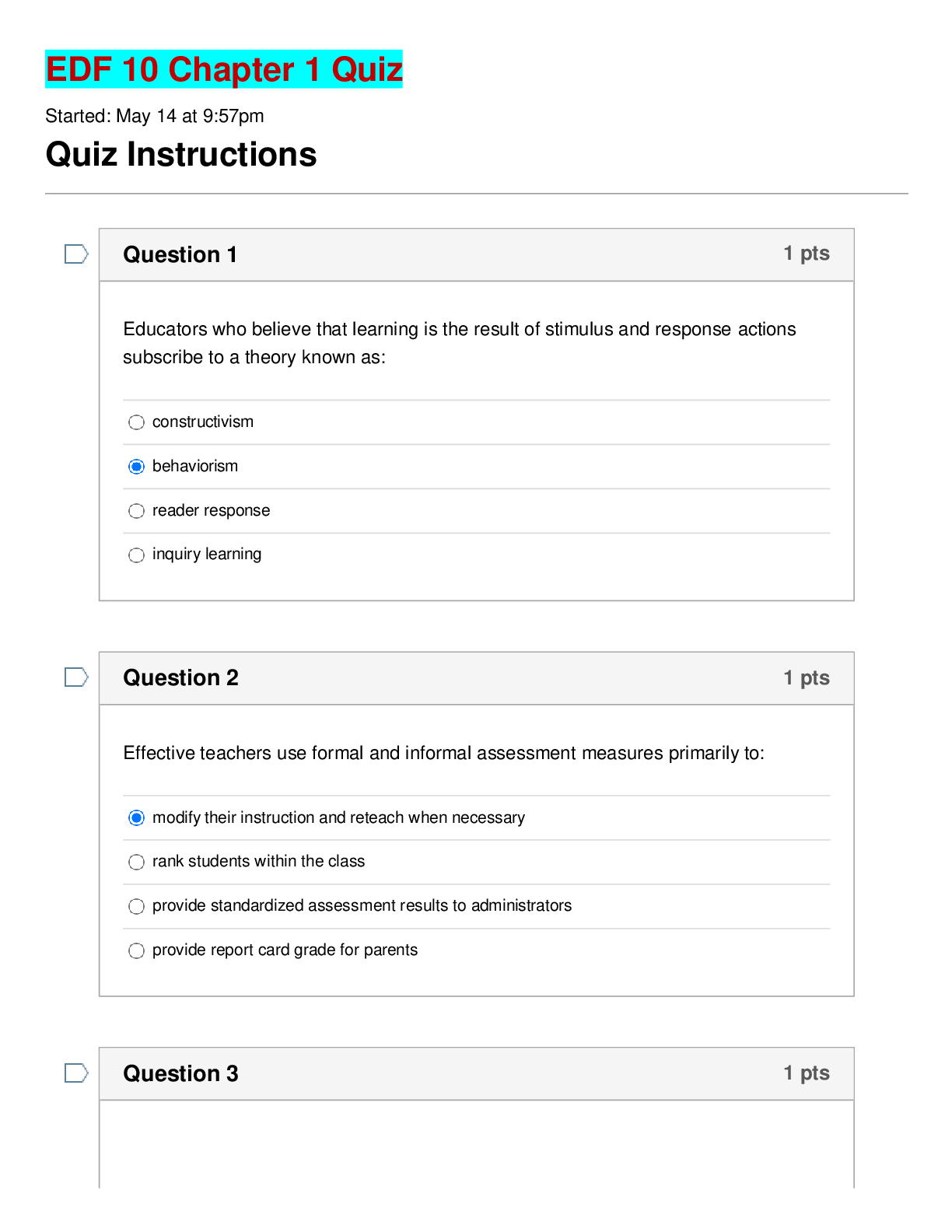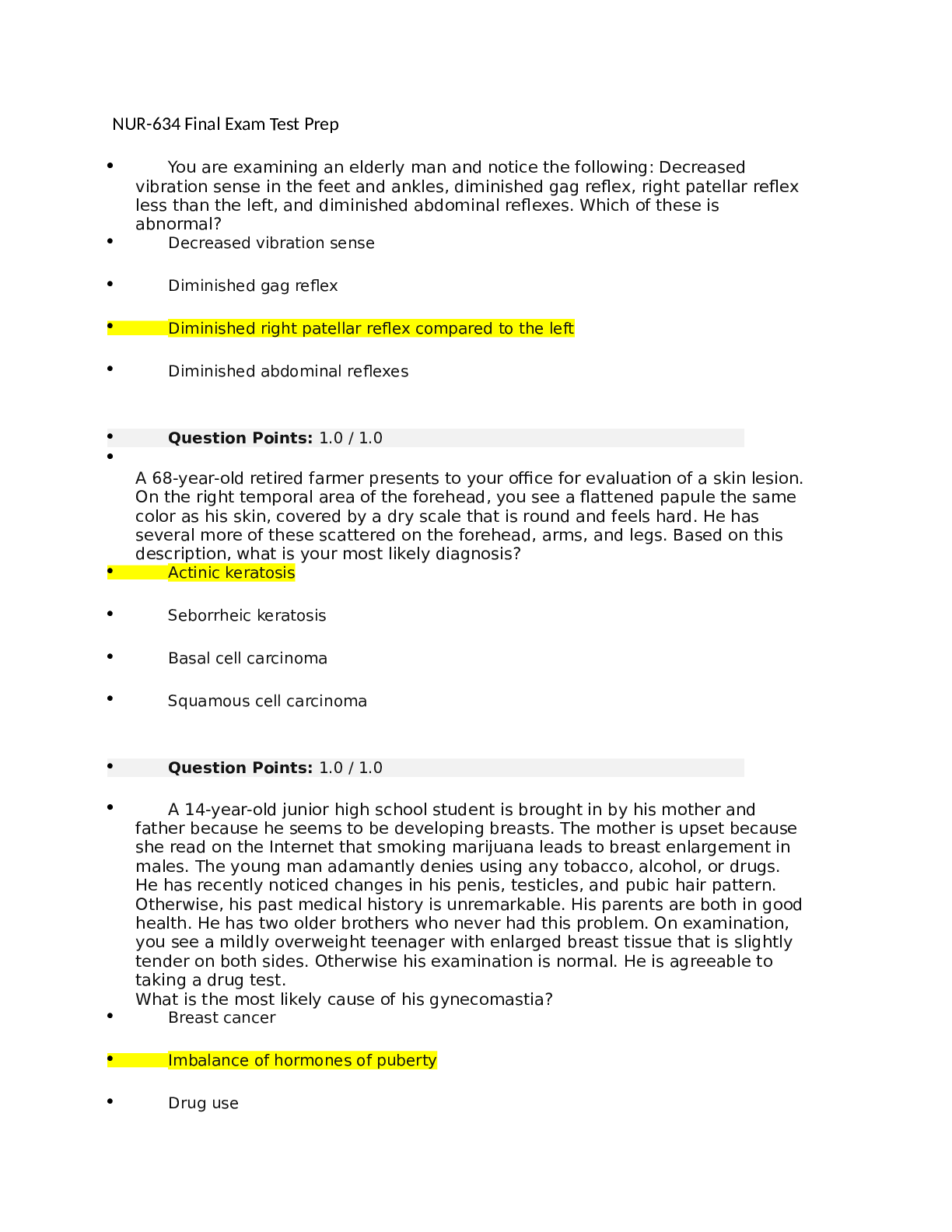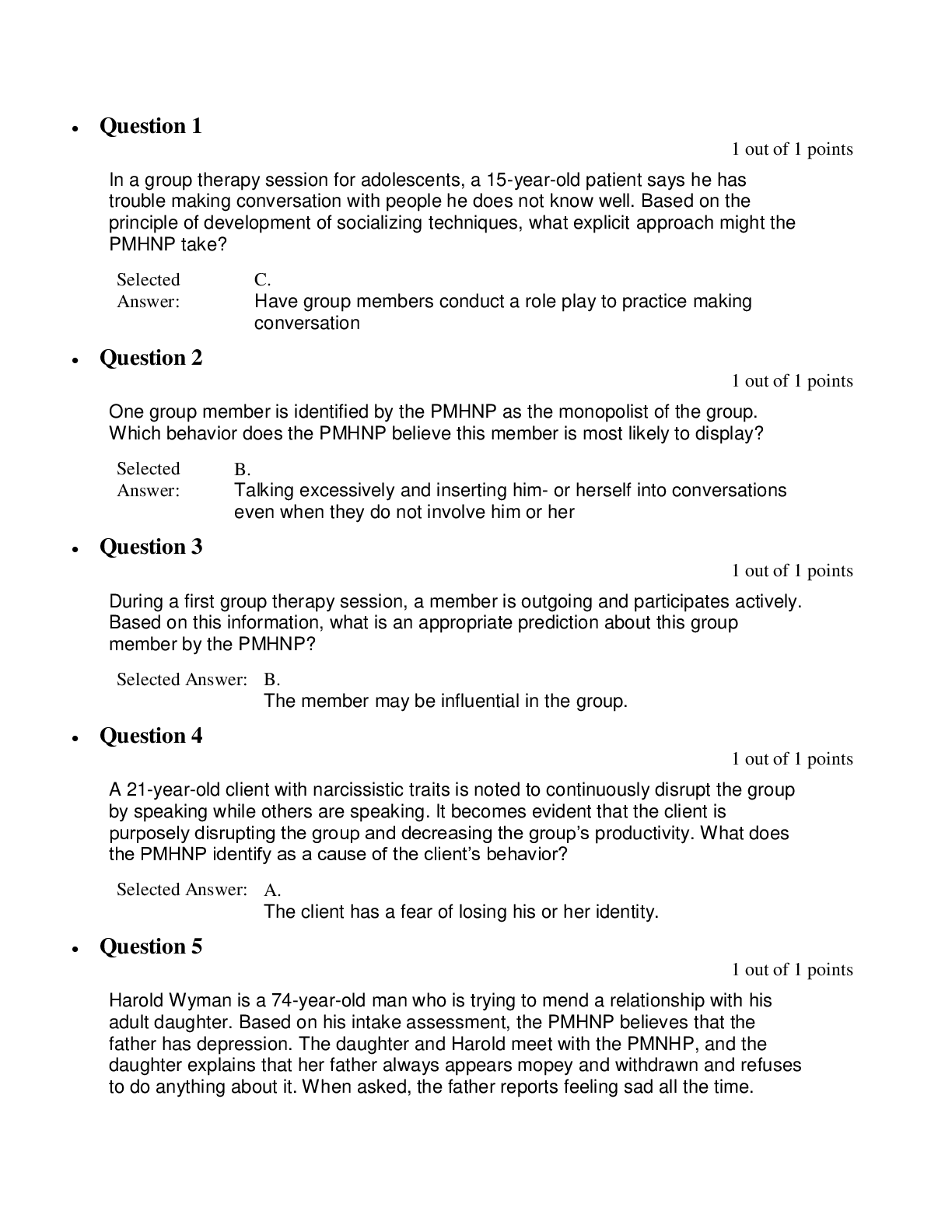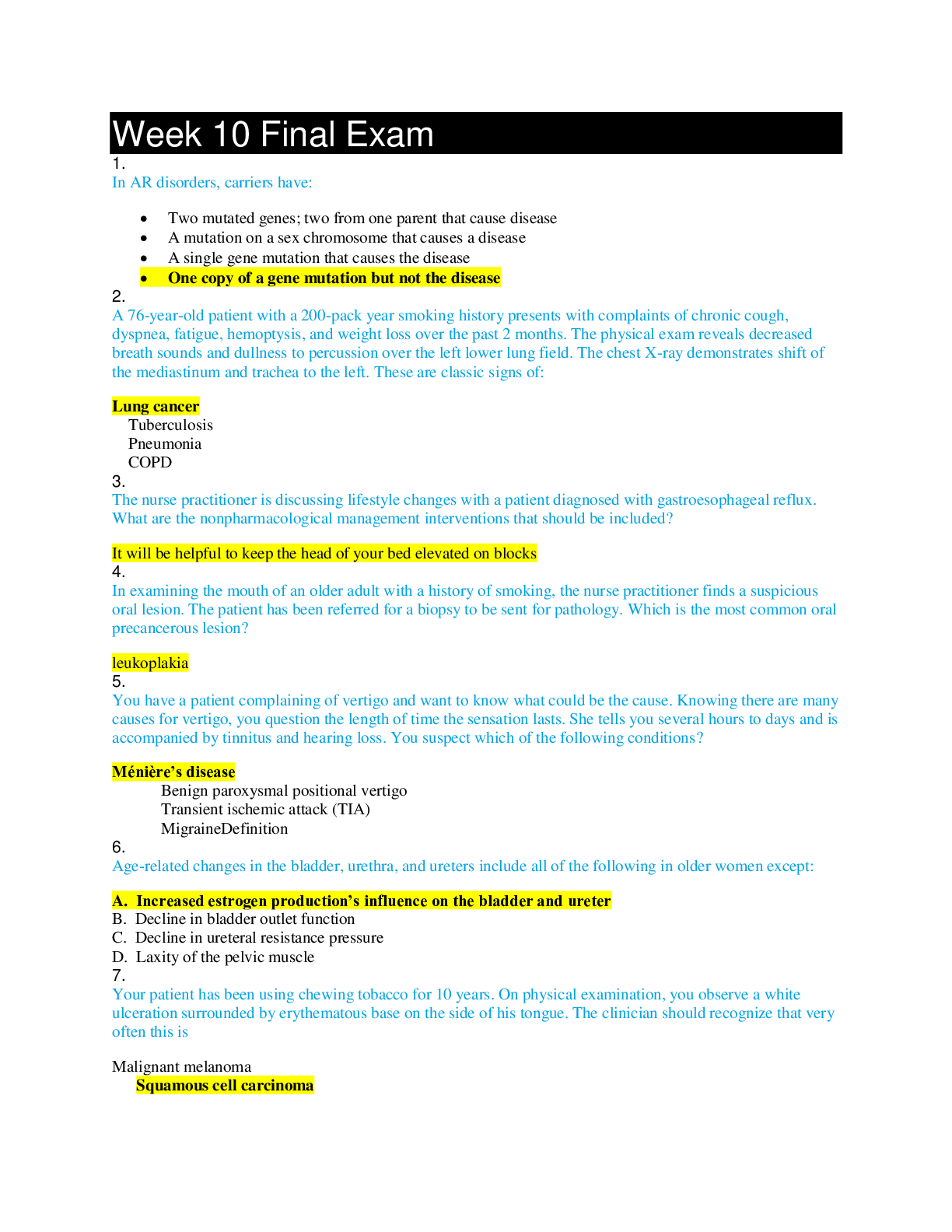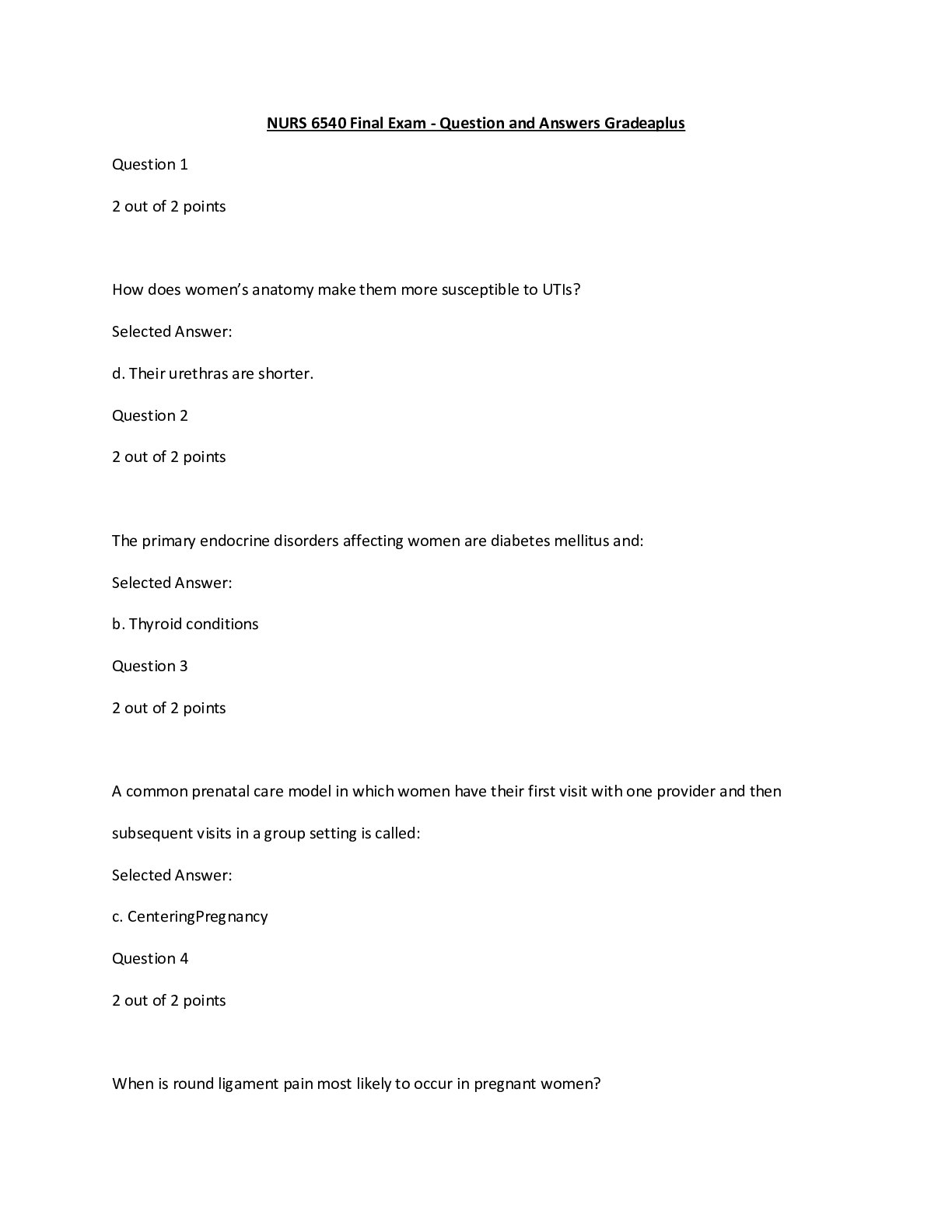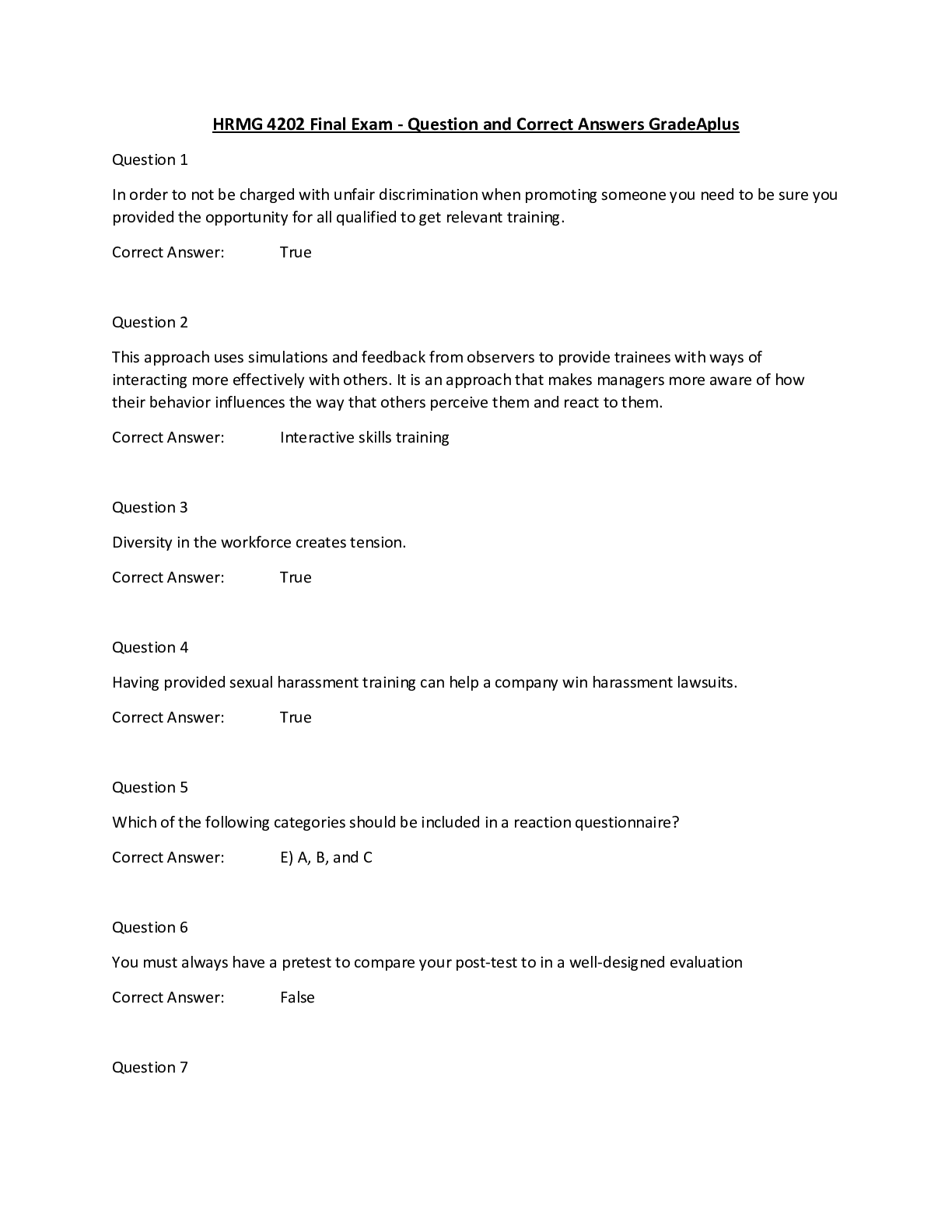ECON 304 Final Exam - Questions with Verified Answers
Document Content and Description Below
ECON 304 Final Exam - Questions with Verified Answers The law of demand suggests that as price rise the quantity of a good purchased will also rise. False When drawing a graph of demand, price is ge... nerally placed on the vertical axis. True Changes in the price of a good are considered demand shifters. False Demand is defined as the various quantities of a good or service that people are willing and able to buy at various prices during some time period. True The law of demand is a fairly weak law. In fact this is one of the weakest laws in economics. False An increase in the price of a complement will shift the demand curve to the right. False An increase in the price of a substitute will shift the demand curve to the right True An increase in the price of the good itself will shift the demand to the left. False An increase in income will always shift the demand to the right. False An increase in taste for a good will shift the demand to the right. True The supply curve is downward sloping False More producers will shift the supply curve to the left False An increase in subsidies will shift the supply curve to the right True An increase in expected prices in the future will shift the supply curve to the left. False An increase in the price of inputs will shift the supply to the left True As the price of a good falls people are willing and able to pruduce more of a good or service. False Shifting the Demand Curve to the Right will result in an Increase in Price and an Increase in Quantity True Shifting the Demand Curve to the Left will result in an Decrease in Price and an Increase in Quantity False Shifting the Supply Curve to the Left will result in an Decrease in Price and an Decrease in Quantity False Shifting the Supply Curve to the Right will result in an Decrease in Price and an Increase in Quantity True If the Demand is P = 100 - 4Q and the Supply is P=6Q What is the equilibrium Price and Quantity Q = 10, P=60 If the Demand is P = 100 - 4Q and the Supply is P=6Q What is the choke price 100 If the Demand is P = 100 - 4Q and the Supply is P=6Q What is the CS 200 If the Demand is P = 100 - 4Q and the Supply is P=6Q What is the PS 300 If the Demand is P = 100 - 4Q and the Supply is P=6Q What is the TS 500 If the Demand is P = 100 - 4Q and the Supply is P=6Q If the price was set by the government at $80 would this be a Price Floor True If the Demand is P = 100 - 4Q and the Supply is P=6Q If the price was set by the government at $80 would this be a would this result in a Surplus or a Shortage Surplus If the Demand is P = 100 - 4Q and the Supply is P=6Q If the price was set by the government at $12 what would be the value of the shortage or the surplus. 20 If the Demand shifts to the right Price will increase and Quantity will increase If Supply shifts to the left Price will increase and Quantity will decrease Which of the following is not illustrated by the Production Possibilities Model Increasing Marginal Product The Law of Demand says that An increase in price will result in a decrease in quantity Which of these is not a problem with the command economy? Freedom of Enterprise If A and B are subsitutes An increase in the price of a subsitute (good B) will Shift the demand to the right for good A If A and B are complements A decrease in the price of a complement (good B) will Shift the demand to the right for good A An Increase in Income will Shift the demand for an inferior good to the left A decrease in Income will Shift the demand for an inferior good to the right I the price of beer (PB) = $10 and the price of Apples (PA) = $10 and your income (INC) = $100 and B= the number of beers that you buy and A=the number of Apples that you buy If I put B on the verticle axis what is the equation for this budget without the values of the parameters entered? B = -(PA/PB)(A) + INC/PB I the price of beer (PB) = $10 and the price of Apples (PA) = $10 and your income (INC) = $100 and B= the number of beers that you buy and A=the number of Apples that you buy If I put B on the verticle axis what is the equation for this budget with the values of the parameters entered? B = -A + 10 If the price of beer (PB) = $10 and the price of Apples (PA) = $20 and your income (INC) = $100 and B= the number of beers that you buy and A=the number of Apples that you buy What is the most amount of Apples that I can buy? 5 If the price of beer (PB) = $10 and the price of Apples (PA) = $20 and your income (INC) = $100 and B= the number of beers that you buy and A=the number of Apples that you buy If you bought 3 apples how many beers could you buy? 4 A market economy works best when there is no government intervention False Which of the following has generally been considered historically to be the best example of a market economy Hong Kong What are the two problems with a command economy? Incentive and Coordination Which of the following will shift the demand to the right? An increase in price of a substitute If both demand and supply shift to the right the change in price will be Ambiguous Economics is a Social Science Economists generally claim they do Positive Economics Microecoomics is concerned with Producers and Consumers The Law of Supply says that An increase in price will result in an increase in quantity Opportunity Cost Is the cost of the next best thing you had to give up to do something Which of following will shift the supply to the left An increase in taxes Rent Control is an example of a price floor False Minimum wage is an example of a price ceiling. False Which of the following is not a demand function P = 30 + Q Left shoes and right shoes are complements True Distribution can be a problem with the market economy. True Normative Economics Says what things should be The various quantities that people are willing and able to buy at various prices during some time period is the definition of Demand The budget model accounts for the ability to borrow money False Income Elasticity is always positive False The Cross Price Elasticity is positive for substitutes. True The Price Elasticity of Demand is always positive. False The Price Elasticity of Supply is always positive. True Inelastic demand is when the absolute value of the elasticity is greater than 1 False Goods are more elastic in the long term than they are in the short term. True The Elasticity of Demand is the same at every point on the demand curve. False Luxury goods have a more elastic demand then necessities. True Paper clips have a more elastic demand than cars. False The elasticity of demand is the % change in Price divided by the % change in quantity demanded. False Which of the following is not a factor of production? Competition If PPC = price determined in perfect competition QPC = quantity determined in perfect competition POL = price set by Oligopoly QOL = quantity produced by Oligopoly PMO = price set in monopoly QMO= quantity produced in monopoly Then PPC < POL < PMO If PPC = price determined in perfect competition QPC = quantity determined in perfect competition POL = price set by Oligopoly QOL = quantity produced by Oligopoly PMO = price set in monopoly QMO= quantity produced in monopoly QPC > QOL > QMO [Show More]
Last updated: 11 months ago
Preview 4 out of 18 pages

Loading document previews ...
Buy this document to get the full access instantly
Instant Download Access after purchase
Buy NowInstant download
We Accept:

Reviews( 0 )
$15.00
Can't find what you want? Try our AI powered Search
Document information
Connected school, study & course
About the document
Uploaded On
Jul 05, 2024
Number of pages
18
Written in
Additional information
This document has been written for:
Uploaded
Jul 05, 2024
Downloads
0
Views
44

